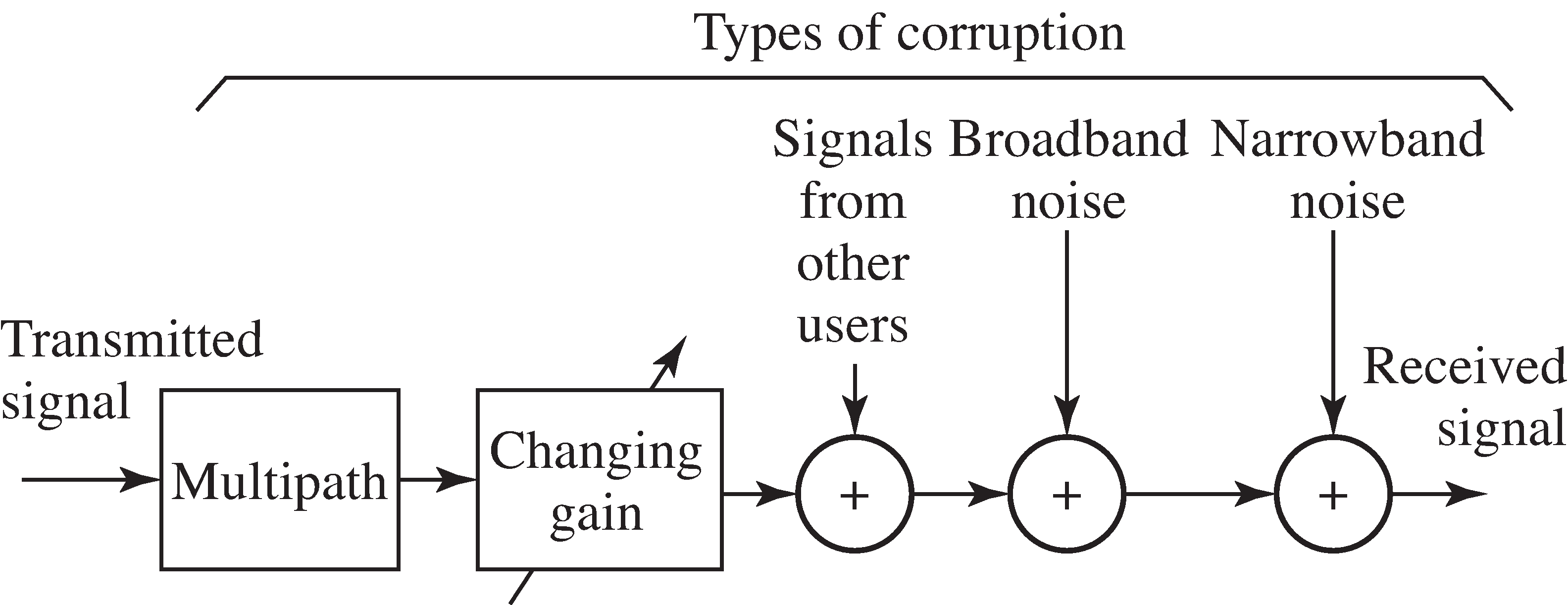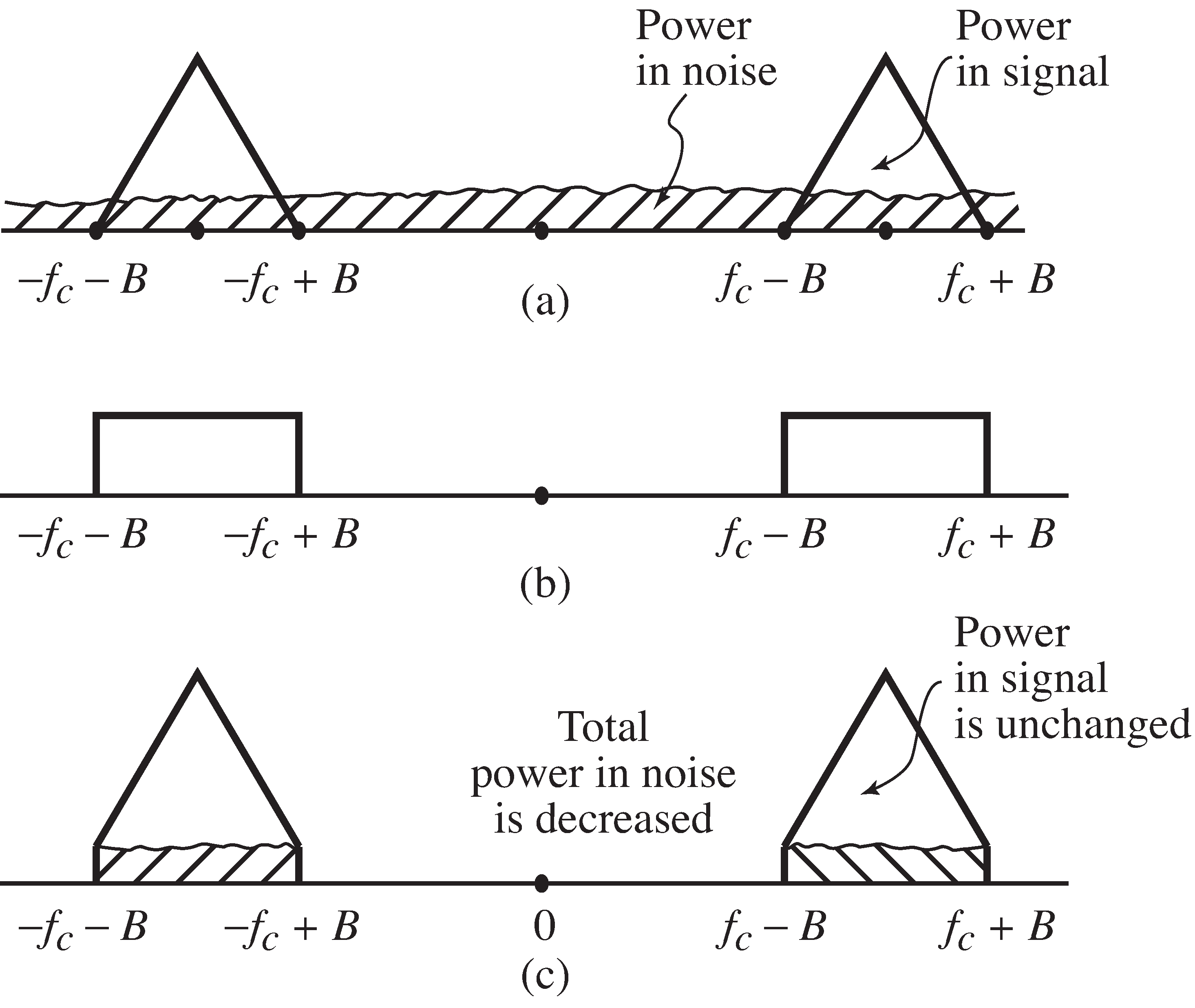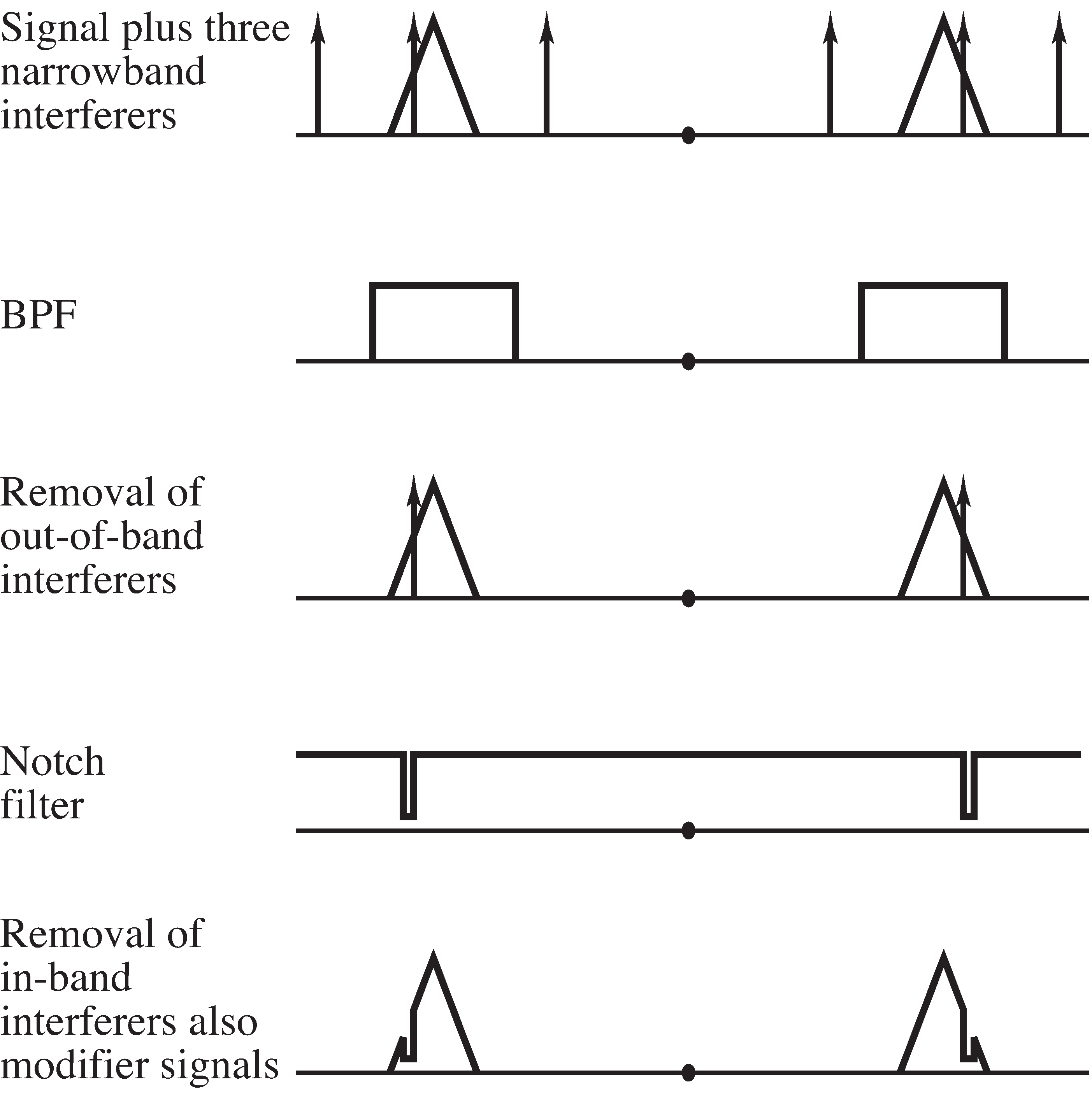| << Chapter < Page | Chapter >> Page > |

When the signal arrives at the receiver, it is small and must be amplified. While it is possible to build high-gainamplifiers, the noises and interferences will also be amplified along with the signal. In particular, any noise in the amplifier itself will be increased. This is often called “thermal noise” and is usually modelled as white(independent) broadband noise. Thermal noise is inherent in any electronic components and is caused by smallrandom motions of electrons, like the Brownian motion of small particles suspended in water.
Such broadband noise is another reason that a bandpass filter is applied at the front end of the receiver. Byapplying a suitable filter, the total power in the noise (compared to the total power in the signal) can often be improved. [link] shows the spectrum of the signal as a pair of triangles centered at the carrier frequency with bandwidth . The total power in the signal is the area under the triangles. The spectrum of the noiseis the flat region, and its power is the shaded area. After applying the bandpass filter, the power in the signalremains (more or less) unchanged, while the power in the noise is greatly reduced. Thus, the signal-to-noise ratio (SNR) improves.
Noises are not always white; that is, the spectrum may not always be flat. Stray sine waves (and othersignals with narrow spectra) may also impinge on the receiver. These may be caused by errant transmitters that accidentlybroadcast in the frequency range of the signal, or they may be harmonics of a lower frequency waveas it experiences nonlinear distortion. If these narrowband disturbances occur out of band, they willautomatically be attenuated by the bandpass filter just as if they were a component of the wideband noise.However, if they occur in the frequency region of the signal, they decrease the SNR in proportion to theirpower. Judicious use of a “notch” filter (one designed to remove just the offending frequency) can be an effectivetool.
[link] shows the spectrum of the signal as the pair of triangles, along with three narrowband interferersrepresented by the three pairs of spikes. After the bandpass filter, the two pairs of out-of-band spikes are removed,but the in-band pair remains.


Applying a narrow notch filter tuned to the frequency of the interferer allows its removal,although this cannot be done without also affecting the signal somewhat.

Notification Switch
Would you like to follow the 'Software receiver design' conversation and receive update notifications?